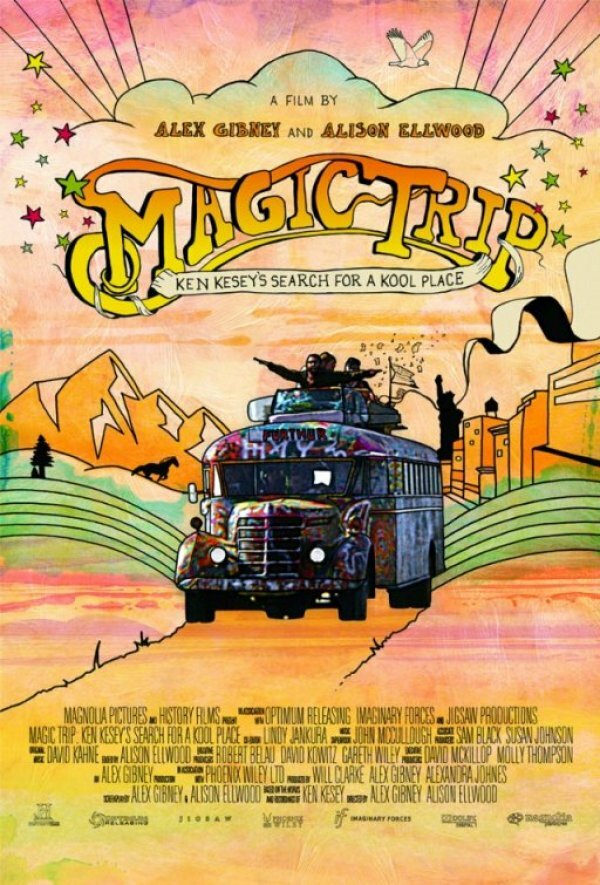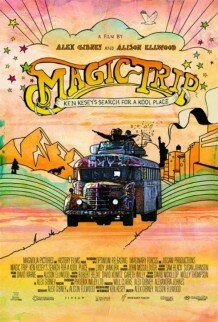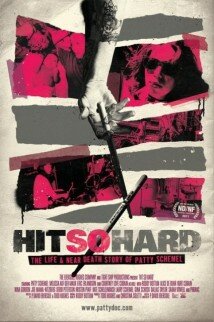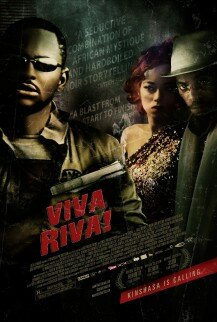Yes, we are now officially in the final week of SIFF. Before you dash off to your next screening, be sure to check the SIFF updates page to see which films are already sold out or are selling fast. Individual tickets for most films cost $11 for the public and $9 for SIFF members. Matinees are a bit cheaper ($8/$7) and those who are more willing to commit can consider all sorts of passes still for sale as well as slightly discounted packs of tickets in bundles of 6 or 20.
With that in mind, let’s take a look at the SIFF films that those of us at The SunBreak have seen recently, as well as the films that we’re most looking forward to seeing over the next couple days. Note that STIFF is also in full effect, so check out their film schedule too!
WHAT WE SAW:
Tony was kinda enchanted by Jonas Trueba’s comedy Every Song is About Me, which covers the on-again/off-again romance between a would-be poet and his fiancee with a light-but-never insubstantial touch. Its combination of airy charm and melancholy feels really French (in a good way), despite its Spanish pedigree.
MvB: In Clink of Ice a bearded Jean Dujardin (OSS 117) plays novelist Charles Faulque as a thorough burn-out, clutching his ice bucket with its chilled white wine like a teddy bear, his wife gone, fed up, with their son in tow. Then his cancer rings the doorbell. Literally. It’s very French to have cancer over for arguments about life’s value, but Faulque’s passivity makes it hard to care about more than his quips, until late in the film he discovers in his maid the enabling love he’s looking for. (June 8, 6:30 p.m. @ Kirkland)
Burke & Hare is another one of those wry retellings with a possibly historical basis, goosed up with allegory to modern life, slang, and an subplot with an all-female Macbeth, and starring a host of famous Brit faces. Simon Pegg and Andy Serkis are the lead con-and-funnymen who discover grave robbing is easier if you don’t wait for the burial in the first place, as they attempt to satisfy a Scottish medical school’s demand for autopsy cadavers in 1828. It’s an easy-going good time. (June 11, 8:30 p.m. @ the Admiral)
If you remember Seattle’s Bobo the Gorilla, you can’t miss Project Nim–except you did, there are no more festival showings. Look for it elsewhere though; it’s well worth it. Documentarian James Marsh (Man on Wire) returns with this story of a chimpanzee raised to be “human,” who illustrates that there’s a lot of truth to the lives chronicled in Dickensian tales. Charting his life from spoiled infant to prodigy, to outcast to medical research subject, the film subtly demonstrates how Nim changed his teachers’ lives as well. Really a profoundly affecting film.
Josh was also intrigued by the unfortunate tale of Nim Chimpsky, beginning with his painful separation from a tranquilized mother to a life in exile among abused hoofed animals. Although I appreciated the documentary, I simultaneously wished for a different film that, instead of following the life of the chimp, burrowed deeper into the questionable world of the the family that decided to adopt a wild animal into their Upper West Side brownstone, and the culture of scientific research that allowed a behavioral psychologist with a propensity for sleeping with his research assistants (the 70s!) to set up a swinging chimp-rearing commune in a Columbia-owned mansion in the Bronx.
MvB: Snow White‘s run at the festival is also done, but it’s worth searching out. Choreographer Angelin Preljocaj reinvents the fairytale as an erotically charged thriller, with the help of costume designer Jean Paul Gaultier, sets by Thierry Leproust, and excerpted music by Gustav Mahler. If the spectacle is sometimes over the top (thinking of the Queen’s S&M bustle), it’s also inventively delightful (the Seven Dwarves as a cliff-face dancing troupe), and the scene where the prince tries to dance a dead Snow White back to life captures the brutality of heartbreak like nothing else.
Josh realized that only in Seattle and under the spell of SIFF can someone make it through one of Seattle’s nicest, long-delayed spring weekends feeling guilty about having only sequestered oneself in the darkness for five movies. In addition to Project Nim, I caught two other documentaries. Tornado Alley inadvertently brought the important lesson to potential thrill-seekers that massive storms look a whole lot more awesome from a distance than when the eye of the twister is passing right over you. Counterplaying a highly organized large scale research effort to capture billions of datapoints about tornadoes with a D.I.Y. filmmaker’s quest to drive his homemade tank straight into a tornado, the movie didn’t have a whole lot to say about science (though narrator Bill Paxton said fancy words like “tornadogenesis” a lot), but the short running time was filled with enough striking six-story images of storms to make the film recommendable.
As impressive as it was to see scientists chasing down eye-popping pictures of tornadoes, I think that I was even more astonished at how well Alex Gibney cobbled together footage from an untrained band of LSD-afflicted merry pranksters on their cross-country bus journey and turned it into coherent and enlightening story for Magic Trip: Ken Kesey’s Search for a Kool Place.
Josh also watched two incredibly idiotic comedies. The first, Salvation Boulevard dragged the audience through 95 minutes of an interesting premise–evangelical mega-church pastor tries to parlay his flock into a mega-development, but is derailed by an accident with an atheist–crushed under the weight of clunky plot machinations, flat performances, bad jokes, and characters with little personality or obvious motivations. The other, Detention, started with a premise so outlandish as to defy easy summary: let’s just say that a serial axe murderer, the prom, aliens, social dynamics, Hollywood slasher sequels, and a time-traveling bear are all involved. Despite all of that going against (or for) it, director Joseph Kahn and his charming cast embrace the madness and never slow down enough to let you care that it’s completely preposterousness. I left feeling won over by something that I probably should’ve hated.
Tony joins MvB in his fondness for the French comedy, The Names of Love. Only Gallic filmmakers could pull off this melange of topicality, broad farce, breezy sexuality, and visual beauty with such elan. Insert the obligatory souffle reference here.
Speaking of pulling off tough tasks, director Sean Branney succeeds at adapting the oft-unfilmable work of H.P. Lovecraft by steeping The Whisperer in Darkness in the tropes of a bygone era. The movie’s an open, highly effective homage to 1930s horror cinema, replete with an evocative black-and-white patina and expressionistic visuals. More details in Tony’s interview with Branney and members of the Whisperer creative team, posting soon.
Detention, meantime, sprints into the here-and-now with warp speed. The SIFF programming guide name-drops The Breakfast Club, Scream, and Heathers–all valid touchstones–as reference points. But this jet-black comedy’s hyper-driven aesthetic is as densely packed with pure creativity and warped humor as it is with pastiche. One of the most exhilarating surprises of the fest from this cramped perspective. (Director Joseph Kahn spoke with Tony in detail about Detention, in another interview posting soon.)
The Intruder, meantime, delivers precisely what it promises–thousands of killer cobras infesting an apartment building in Thailand and making snake food of the complex’s gaggle of stock characters. It’s pure junk, with plenty of Dumb Movie Characters doing Dumb/Irritating Movie Character Things, and a few chuckle-worthy gaffes (the plot makes much reference to the building’s fifth floor, even as one exterior shot displays an obviously three-floor building). Still, the movie’s mounted with a lot more imagination than your average Sci-Fi Channel killer-animal opus, and the well-engineered scares had The SunBreak’s resident schockologist jumping out of his seat with frequency. (June 8, 9:30 p.m. @ the Neptune)
Angel of Evil tells the fact-based story of Italian gangster Renato Vallanzaca, a charismatic career criminal who staged robberies and kidnappings throughout the 1970’s with reckless, go-for-broke flamboyance. Slug for slug, it’s one of the best crime flicks of the fest–executed with relentless energy and ravishing sensuality by director Michele Placido. Kim Rossi Stuart, the actor playing Vallanzaca, cauterizes the screen with a wiry energy that never stoops to scenery chewing (think Alain Delon by way of Ryan Gosling).
On the other hand, the Spanish experimental flick Finisterrae left much of the audience scratching their heads (choice quote from college-age girl exiting one screening: “I hate movies where you have to try so hard to figure out what the fuck they mean.”). If you’re in the wrong mood, it probably plays like an absurdist con job, as two guys with sheets over their heads tromp around amidst some lovely Spanish scenery. But this odd, glacially-paced fable about two ghosts trying to find their way back to corporeal existence yields beauty, intentional deadpan laughs, and thought if you’re willing to go with it.
FOR YOUR CONSIDERATION:
- The Off Hours This Northwest Connection has the requisite Lynn Shelton angle: she acted in the truck stop drama, while fellow female local director Megan Griffiths took the film reins. (4:30 p.m. @ Neptune)
- Bobby Fischer Against the World In which the chess champion takes on everyone, on and off the board. (7 p.m. @ Harvard Exit; Wednesday, 4:30 p.m. @ Harvard Exit)
- Love Crime Any psycho-sexual thriller with Ludivine Sagnier and Kristen Scott Thomas is fine by me. (8:30 p.m. @ Admiral)
- PressPausePlay ranked highly on the programmers’ consensus list. With good reason: the digital media revolution doc includes appearances by Olafur Arnalds, Hot Chip, Robyn, and Lykke Li. (9:15 p.m. @ SIFF Cinema; June 10, 4:30 p.m. @ Neptune)
- High Road is no mere stoner film, considering it includes such comedy talents as Abby Elliott, Rob Riggle, and Ed Helms. (9:30 p.m. @ Egyptian)







